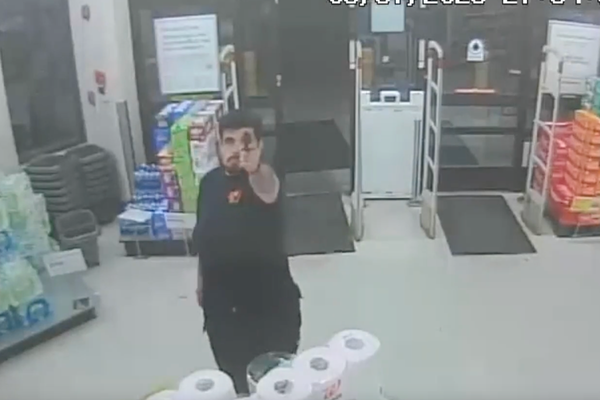
Around 9.30am on 15 January of this year, Michelle Go was waiting for a train at Times Square subway station. Go, 40, a senior manager at Deloitte, was on her way to work. As she was checking her phone, a man shoved her from behind as a train roared into the station. She was hit by the incoming train and killed.
Go’s murder prompted shock and outrage. She was of Asian descent, at a time when anti-Asian hate crimes have been surging across New York City, including in the subways. The chief suspect in her killing, Martial Simon, has two violent felonies on his record and a warrant out for allegedly violating his parole. He reportedly had a history of severe mental illness, including schizophrenia, and had cycled between hospitals and jails over the years; the New York Times reported he was unhoused. Although police said there was no indication that Go’s death was an anti-Asian hate crime, prosecutors said they were examining “every piece of evidence to determine if defendant’s actions were motivated by racial bias”.
Whoever her alleged killer is, or whatever his motives, Go’s death seemed to crystallize many New Yorkers’ sense of fear that their subway, infamously dangerous decades ago, was once again becoming unsafe – due to random crime or an influx of at-risk persons acting erratically, or both.
The new mayor, Eric Adams, has responded forcefully. A former police captain who ran for office on law-and-order talking points, Adams said Go’s death “just really doubled down on our concerns that our system must be safe”. He referred to the way some New Yorkers now “feel as though there’s a total level of disorder in our subway system”.
Joe Biden descended on New York City last week to meet Adams and New York’s governor, Kathy Hochul, at the New York police department headquarters, to discuss rising crime across the US. The president’s visit, which focused on curbing gun crime across New York and other major US cities, came after the killings of NYPD officers Jason Rivera and Wilbert Mora, who were shot last month responding to a domestic violence call.
“The answer is not to defund the police,” Biden said. “It’s to give you the tools, the training, the funding to be partners, to be protectors – and the community needs you. Know the community.”
Adams had already vowed to make police an “omnipresence” in the subway, adding 50,000 citywide subway inspections from 6 January to 26 January and deploying an additional 1,000 extra officers into subways daily.
The political response, however, simplifies what is an incredibly complicated story now playing out over safety, not just on the subway but citywide.
The subways are statistically quite safe, compared with previous decades – albeit somewhat less safe than a few years ago. Rates of violent crime per million passengers have increased since 2019, according to the New York Times; and while New York remains one of the safest cities in the US, The City reports that in 2021 “the most serious crimes were up 5% from the previous year, including murders that have been on the rise since 2018”. But, overall crime is nowhere near late-1980s and 1990s highs.
The definition of safety, however, varies dramatically depending who you talk to. Many female New Yorkers say the statistics don’t tell the whole story. “No, I don’t feel safe,” said Tanya Murphy, a 40-year-old massage therapy student. “Tragedies of people being pushed, you know, these just reinforce feeling unsafe, and … my friends, or people I know, they’re always like, ‘Hey, be careful in the subway.’”
Therin Pressley, 55, who was in the Times Square subway station on a recent Wednesday with three dogs, raising money for animals, believed the pandemic’s impact on the economy and mental health had contributed to violent crime on the subways. “I feel safe in a way because, look at me: I’m 6ft 5in, I’m like 200lb. I don’t look like an easy [prey],” he said, but added: “You got guys out here pulling guns on buses, trains … You have cops out here being shot, so you’re not safe anywhere.”
Jorge Arteaga, deputy director at the anti-street harassment organization Hollaback!, said that safety in public spaces is often thought of in the context of recorded physical violence, whereas menacing behavior should also be considered. “What are we defining as safety, or making the trains safer – are people still being cursed at? Hit? Spit at?” Arteaga said.
Harassment often goes unreported, especially if it doesn’t rise to a criminal level, meaning official metrics don’t always accurately convey experiences – and women, especially women of color, are disproportionately affected by inappropriate encounters, Arteaga said.
“On paper, technically, what people are tracking – yeah it looks like it’s safer. In reality, when you go and speak to the people in the community, do they feel safer? Probably not.”
Pandemic-fueled declines in ridership have also changed the feeling on the subway, he said. “If something were to happen to me on the train, do I feel like someone will meaningfully step in to support me?” Arteaga said. “Mostly, a lot of people would say ‘no.’”
Safety is not just about physical attacks, agreed Manjusha Kulkarni, executive director of the Los Angeles-based AAPI Equity Alliance. “When we think of what it means, especially for women in our community but even just women generally: What are the ways in which we have modified our lives because we feel unsafe?”
Neither Kulkarni nor Arteaga believe that ramped-up policing would necessarily solve these problems. Kulkarni said advocates want more discussion about practical ways to address the feeling of safety – such as ensuring adequate lighting in stations, and staff around to help.
“Many, many incidents have happened – both women and men in our community, and those who are non-binary – involving threatening behavior on public transit. So how do we essentially stop that?” she said.
Christopher Herrmann, a former crime statistics analyst for the New York police department who now teaches at John Jay College of Criminal Justice emphasized that the subways are still very safe, but noted that low ridership can be associated with changes in the types of crimes that occur. “The chances of being a victim in the New York City subway have always been one in a million or higher,” Herrmann said. “The chances of winning the lottery are similar to the chances of being victimized – it’s really that low.
“When we see low ridership like we have now, sometimes we see some of the more violent kind of crime because, I think, the bad guys don’t see a lot of people around – they feel kind of more emboldened that no one’s going to kind of step in and be a good Samaritan.”
What’s more, the subways have long been home to a large number of unhoused people like the suspect in Go’s murder, a fact that the pandemic – with its effect on the economy and on declining ridership – has brought to the fore. Beanca Beleno, who takes the subway home from her kitchen job late at night, said she sees a lot of erratic people on the train now. There’s the person who smokes. There’s the person who rants. There are people sleeping.
“I can tell that it’s been worse, especially now. The Omicron is going on, and then it’s winter,” Beleno said. “They’re just all over on all the subway stations, all the trains.”
Subway employees, too, are concerned about the number of people with mental health troubles, whose problems they are not charged with addressing. “Our workforce is scared,” the Metropolitan Transportation Authority chair and CEO, Janno Lieber, told a press conference last month. “In addition to our passengers, our workforce is struggling because they’re feeling vulnerable – because when they go to clean and they turn a corner, they’re coming upon … people with conditions that are unpredictable.”
For many of the unhoused persons who seek shelter in the subways, treatment for mental health and substance abuse remains out of reach. “The reason that people are seeing folks on the subway who don’t have an obvious destination is because they don’t have a place to live – it’s that simple,” said Joshua Goldfein, staff attorney with the Legal Aid Society’s homeless rights project.
“I think every New Yorker would tell you that they see more unhoused people on the subway than they used to. That doesn’t mean there are more people,” Goldfein said. “It seems safe to say that the problem has become more visible – and the reason for that, again, is that we have not provided enough alternative places for those people to live or to stay.”
Advocates stress that they don’t think being unhoused, or having mental illness and substance abuse issues, makes you inherently dangerous, but that vulnerable people living without support in bustling, open spaces was of concern for everyone.
“Anytime that you have somebody who is in need of a higher level of care than they’re getting – who’s in a stressful environment where they can’t get any rest, and they’re not able to regularly access their medication – there’s certainly going to be a heightened risk of negative interaction with other people,” Goldfein said.
Asked about their strategy for helping unhoused people on subways, New York City social and homeless services officials said the agency had ramped up outreach and intensified their efforts at end-of-line and high-traffic subway stations. City-canvassing outreach staff had tripled in recent years, to 600, they said; Hochul recently announced the state would send in behavioral health specialists to help on the subways, who will help connect unhoused persons with social services and shelter.
There is some cautious optimism that the measures could help.
“We’re excited that this is happening,” Lieber said recently. “We know where a lot of these chronically homeless people who are experiencing mental health issues are – we just need to keep creating a system that gets them, first of all, off the platforms and off the trains [and then] into a long-term, supportive situation … But most of all, protect our riders from these experiences that are happening. That’s our focus,” Lieber said.
“The issue is not the number of outreach workers. It’s what resources they have behind them.”







